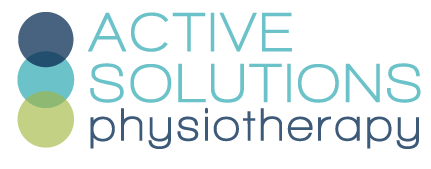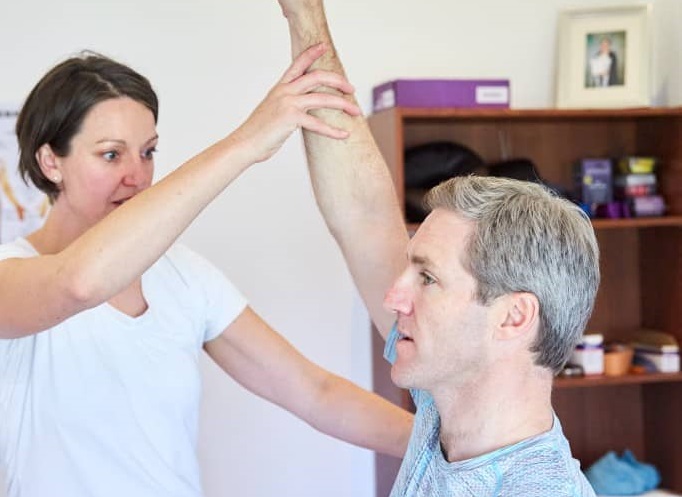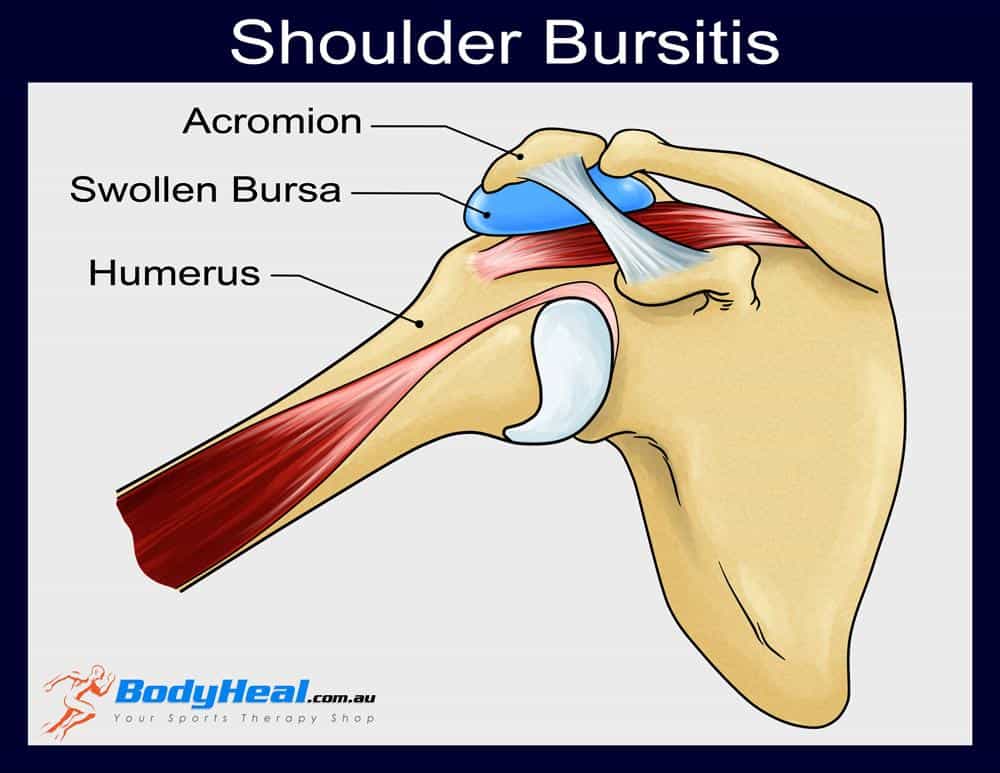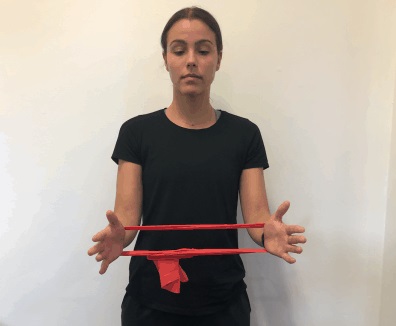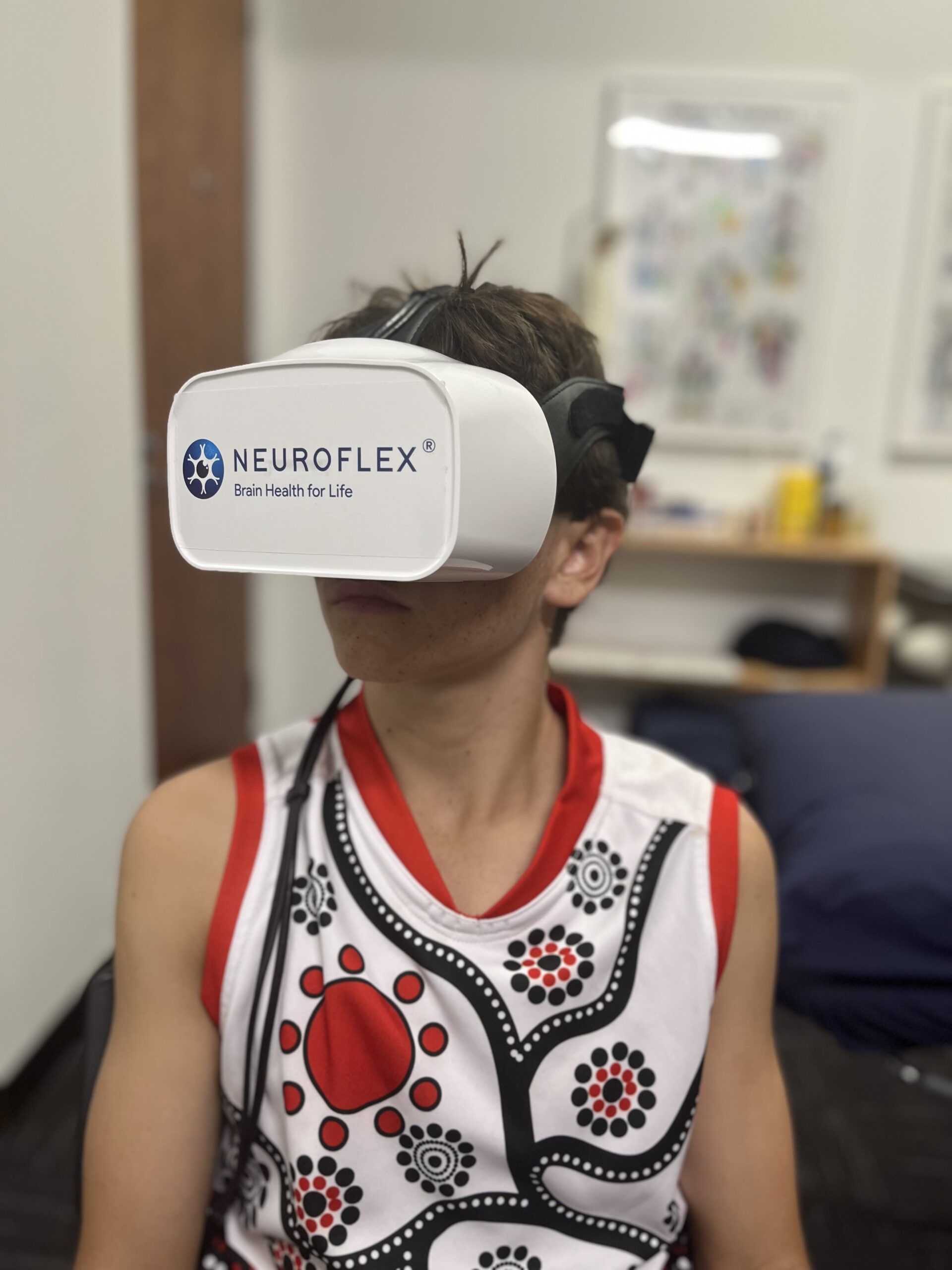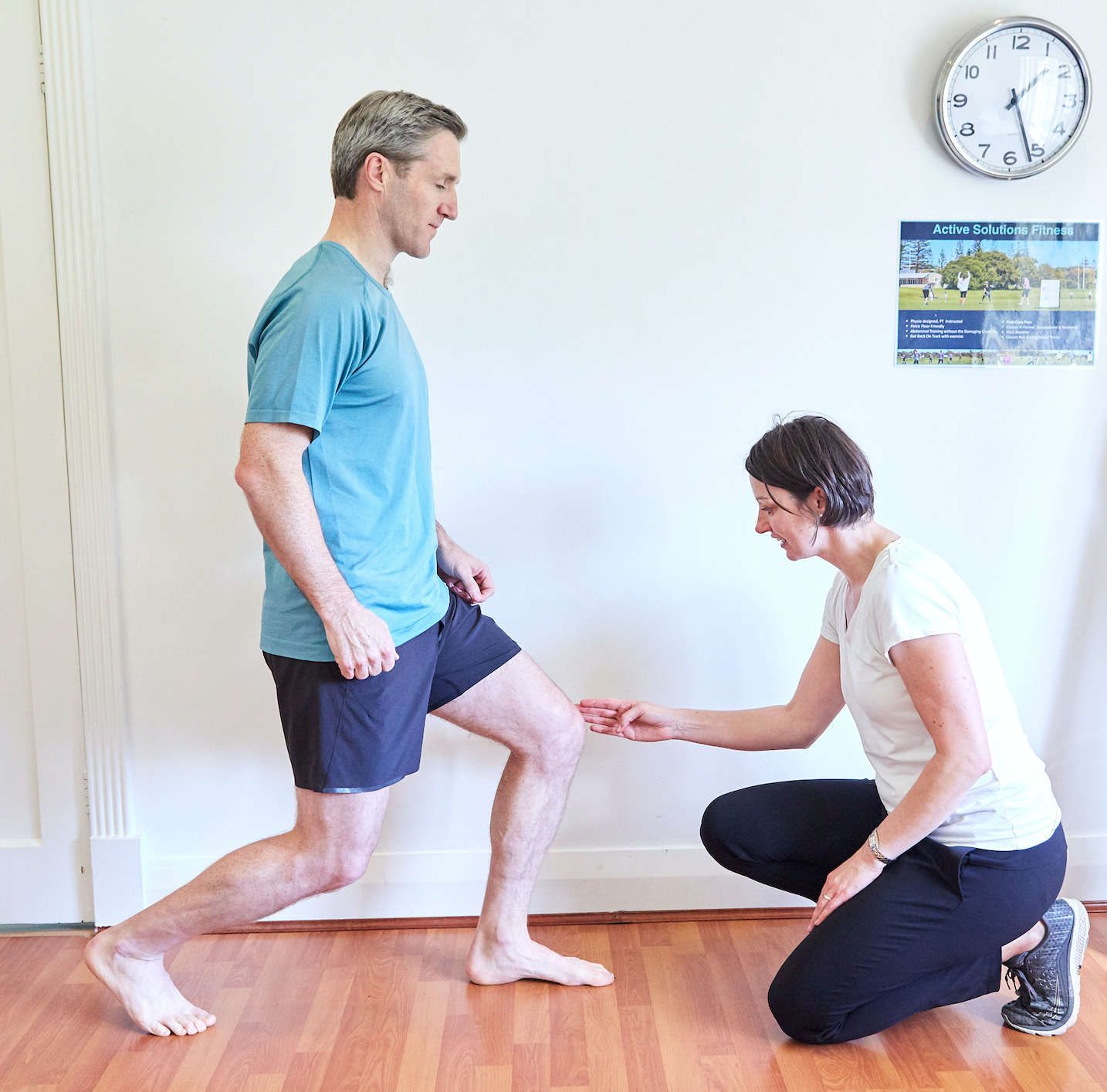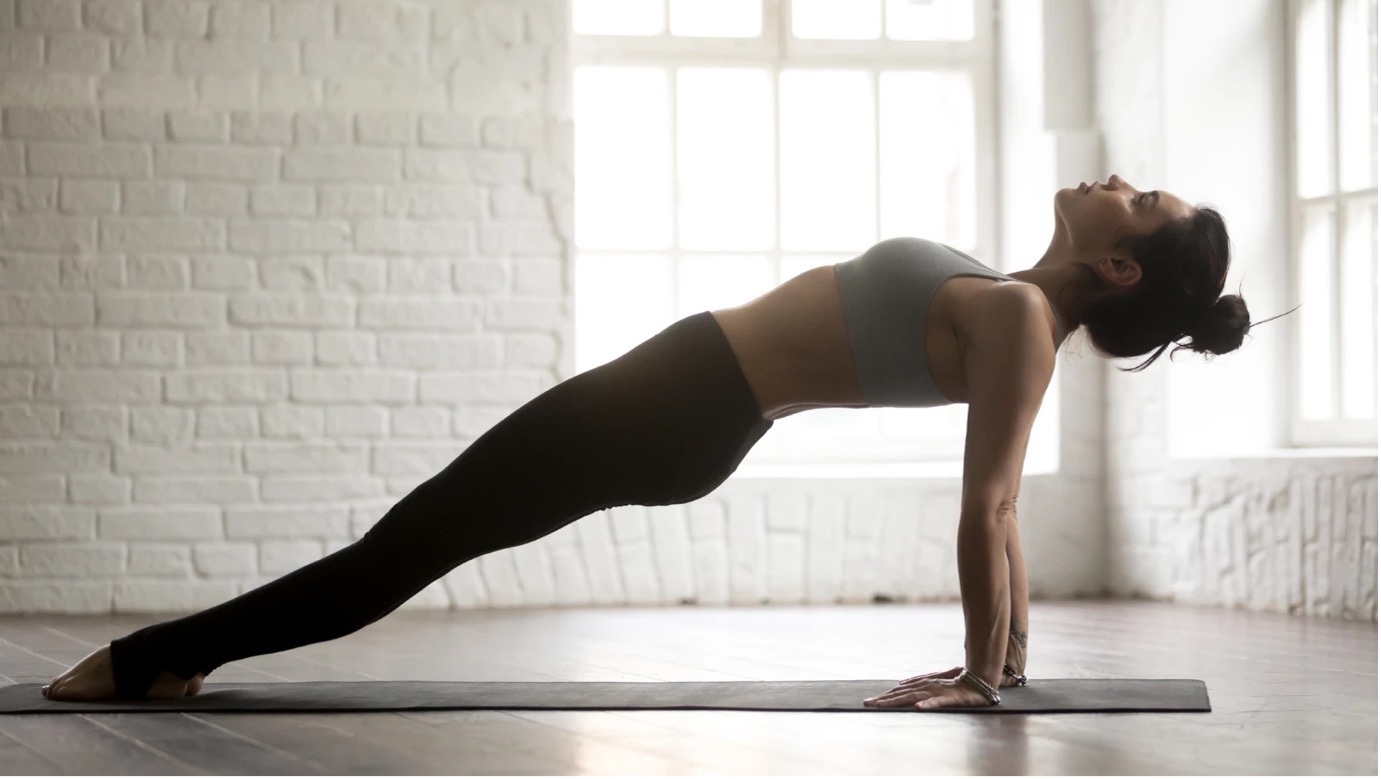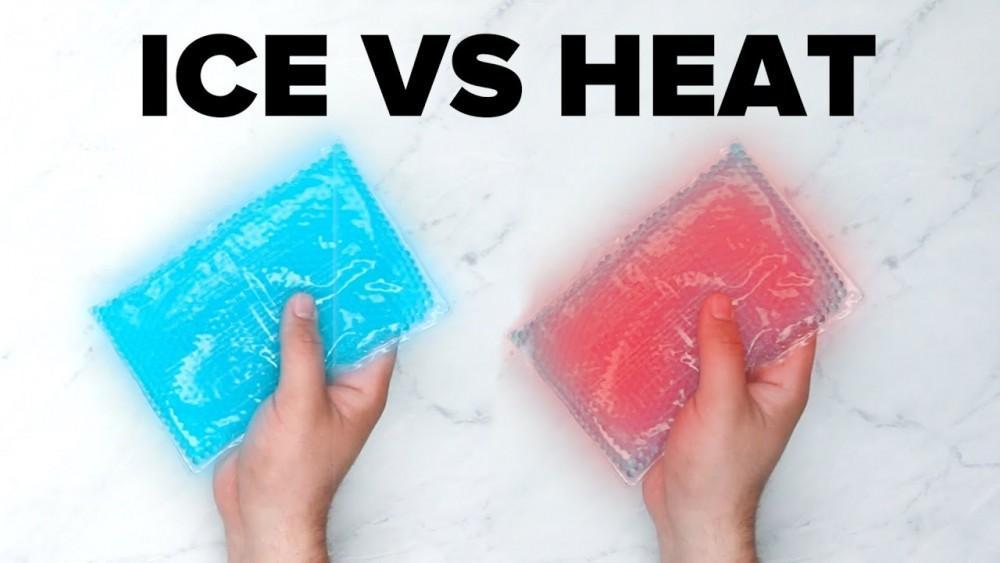For people over the age of 40 with shoulder pain, rotator cuff injury is the most common cause of the pain. When there is a shoulder rotator cuff problem, people feel pain and weakness, especially with over-head arm movements.
The rotator cuff muscles and sub acromial bursa are thought to be the main structures that cause the pain. The traditional route is your GP refers for a scan. If the scan shows no problem, you may be referred to Physio. If there is a rotator cuff tear or bursitis then you will probably be referred to a surgeon.
But is shoulder surgery the best way to go if your scan shows a tear or bursitis?
New research says SURGERY IS NOT THE FIRST PORT OF CALL!
The Rotator Cuff Muscles

The rotator cuff muscles consist of supraspinatus, infraspinatus, teres minor and subscapularis. Collectively they form an interwoven, multilayered tendon that attaches to the shoulder capsule. (Check out our previous shoulder clicking blog)
The muscles act as a group and together they work as one unit to provide stability. The muscles firmly support the socket joint, as the arms move around.
The Sub-Acromial Bursa
The sub-acromial bursa is a fluid filled sac that sits under the acromion bone and acts as a cushion between bones, tendons and muscles. It used to be thought that trauma would cause injury to the bursa, making it swell and causing a bursitis. Now it is known inflammation in the joint or muscle produces fluid which leaks into the bursa and causes distension.
Pain and Damage in the shoulder
The rotator cuff muscles and bursa can be damaged with trauma, like falling on an outstretched arm.
If you fall over onto an outstretched arm, it is quite common to tear supraspinatus and develop bursitis. With this type of trauma if it is suspected you have an acute rotator cuff tear or if you are unable to lift your arm, it is important to get an ultrasound or MRI. This is because if there is a Full Thickness Tear and
- If the tendon has retracted it can be difficult to find the tendon to sew it back on
- After 4 months, the torn muscle starts to get fat infiltration, and there is an increased chance of surgery failing.
In the absence of trauma, constant use of the shoulder in overhead positions can over load the rotator cuff causing them to become painful. This can naturally occur with activities like swimming, DIY jobs around the home, tennis etc.
Traditionally you would go to the GP and get a referral for a shoulder scan. If it diagnosed a tear, you go and have surgery. However, there are a huge number of people walking around with absolutely no shoulder pain and they have a rotator cuff tear they don’t even know is there. So a scan that shows a rotator cuff tear doesn’t necessarily mean that is the cause of the shoulder pain.
Presence of a rotator cuff tear is high in population with no shoulder pain.
13% of people aged 50, 31% people aged 70.
Research clearly demonstrates that Physiotherapy Exercise for non-traumatic rotator cuff tendinopathy and tears is as effective as surgery.
Surgery requires anaesthetic, hospital stay, 6 weeks immobilised in a sling and a 6 month dedicated exercise program. If you don’t need surgery, why would you put yourself through it?
Sometimes surgery is not an option even with trauma with weak, older and fraying muscles.
Physiotherapy Treatment should be at least a 3 month dedicated program to:
Reduce pain by relative rest and modification of painful activities
Make the muscles and tendons stronger with:
- pain free exercises
- controlled re loading
- move from simple to complex shoulder movements
Physiotherapy Treatment is mainly exercised based starting at the simple and progressing to the complex shoulder movements.
Additional benefits of Physiotherapy Treatment include
- Less sick leave
- Faster return to work
- Reduced cost of health care
- General benefits of exercise
In Summary
Rotator Cuff tendinopathy or tears are extremely common and traditionally have been treated by surgical repair. This is necessary for tears caused by trauma, particularly if you are young and active with good quality muscles to sew together. But if there is no trauma or your muscles are getting old and weak?
New research clearly demonstrates that physiotherapy exercises are as effective as surgery for non-traumatic rotator cuff tendinopathy or tears.
Exercises build up the strength of the muscles and activate the shoulder so the right muscles work at the right time for a healthy and functional shoulder without the implications of going under the knife.
